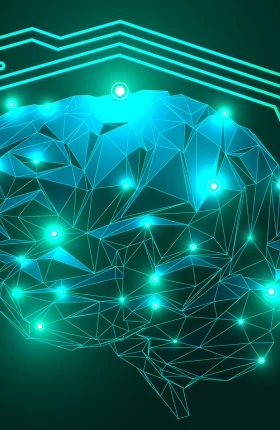Leading networks deploy digital solutions to identify the root causes of their challenges and employ the right human capabilities to ensure the solutions are successful.
Energy network utilities face two major challenges: power losses that arise from fraud and technical issues, and bad debt that results from customers failing to pay their bills. Many networks struggle with these issues because they don’t understand the root causes. Bionic energy networks have been more successful tackling these challenges because they take a comprehensive approach that leverages the best capabilities of technology and people.
Managing energy losses and bad debt in this way can bring substantial benefits. For example, an energy network in India reduced its energy losses from 12.5% to 8.5% over two years. In just six months, a Colombian network reduced its losses by 0.9 percentage points and debt by 0.7 percentage points, which amounted to more than $14 million in value. And a network in Chile reduced its annual bad debt by 20%, which translated into a revenue increase of $3 million over 18 months.
Here, we take a look at how bionic energy networks address power losses and bad debt, while simultaneously improving the customer experience.
Using Technology to Tackle the Challenges
Bionic networks address energy losses and nonpayment issues by identifying the root causes across the value chain, end to end. Key to that effort are the following actions, which bionic networks take in combination with process improvements and change management initiatives.
- Deploying an Analytics Engine and a Dashboard to Visualize Energy Balances. Bionic networks use an analytics engine to power a dashboard that maps assets, energy flows, and transmission losses in real time. These tools enable companies to identify and localize where major energy losses are occurring, detect imbalances between the total amount of energy supplied and consumed, and segment customers by consumption level.
- Using Predictive Modeling to Identify Fraud. Predictive models make it possible to identify many fraud cases with limited inspection resources. They can also help detect power losses resulting from an infrastructure setup or upgrade, which can create inconsistencies across databases. The predictive models, which typically use more than 100 data variables from the field, self-correct by adjusting the search parameters. B2B fraud-detection engines often identify power theft among business customers by comparing actual energy consumption with predicted consumption. And B2C engines typically identify power theft among residential customers on the basis of customer or neighborhood data. Networks use this information to determine which inspections should be done first.
- Deploying Capital Expenditure Prioritization Tools to Reduce Power Losses in a Sustainable Manner. Capex prioritization tools help bionic networks determine which assets and IT systems should be upgraded to cut energy losses and which technological solutions should be invested in to prevent theft. These tools include equipment that is able to detect taps on wires and aerial-bundled cables that short-circuit when hooked up through an illegal line.
- Using Predictive Analytics to Address Collection Issues. Bionic networks use predictive analytics to reduce collection costs, increase proceeds, and speed up the collection process—all while keeping the customer experience positive. A collection customization engine segments customers according to their payment propensity. Since such an engine operates in real time, it’s able to identify the most suitable and effective collection action for each customer.
A bionic network company may concurrently use fraud-detection and collection-optimization engines, as well as other tools, to fine-tune its overall strategy to combat fraud and nonpayment. Using the engines in combination with each other make it possible to determine which personalized actions to pursue for a particular group of customers, whether business or residential, on the basis of certain characteristics and context. This approach also enables companies to identify which customers are committing fraud and which are likely to end up paying their bills. And given these findings, companies can come up with actions that are likely to be more effective with specific customers.
Putting the Right Human Capabilities in Place
To ensure that their digital solutions are successful, bionic networks also put in place the needed human capabilities via the right organization structure, processes, skills, and talent.
When implementing a fraud-detection engine, for example, bionic networks develop a structured incentive system for meter-reading crews, especially in neighborhoods flagged by the engine. When implementing new processes for improving collections and reducing energy losses, bionic networks launch actions through the optimal channel (digital or human assisted, or both) to maximize the chances of payment and the detection of theft.
To optimize the effectiveness of call center agents, the networks provide them with key information about the customer, AI-driven recommendations, dynamic scripts, and simulation engines, all of which help steer the interactions. After systematically validating what works well for each customer group and retraining the AI algorithms with information gleaned from industrialized feedback loops, these networks create a rich catalog of potential actions that agents can take to improve results.
All these digital tools are essential for training and enabling the frontline teams in charge of collections and theft detection.
Bionic energy networks have a very good understanding of their potential to reduce energy losses and debt related to nonpayment, and they are able to develop a portfolio of coordinated initiatives and clear capex-allocation criteria. This portfolio includes clear and realistic reduction targets, a prioritized plan with accountability and KPIs, an optimized allocation of required investments, and employees committed and empowered to drive change. Other networks would benefit greatly from this approach.
The authors thank their former colleague Javier Argüeso for his contribution to this article.






